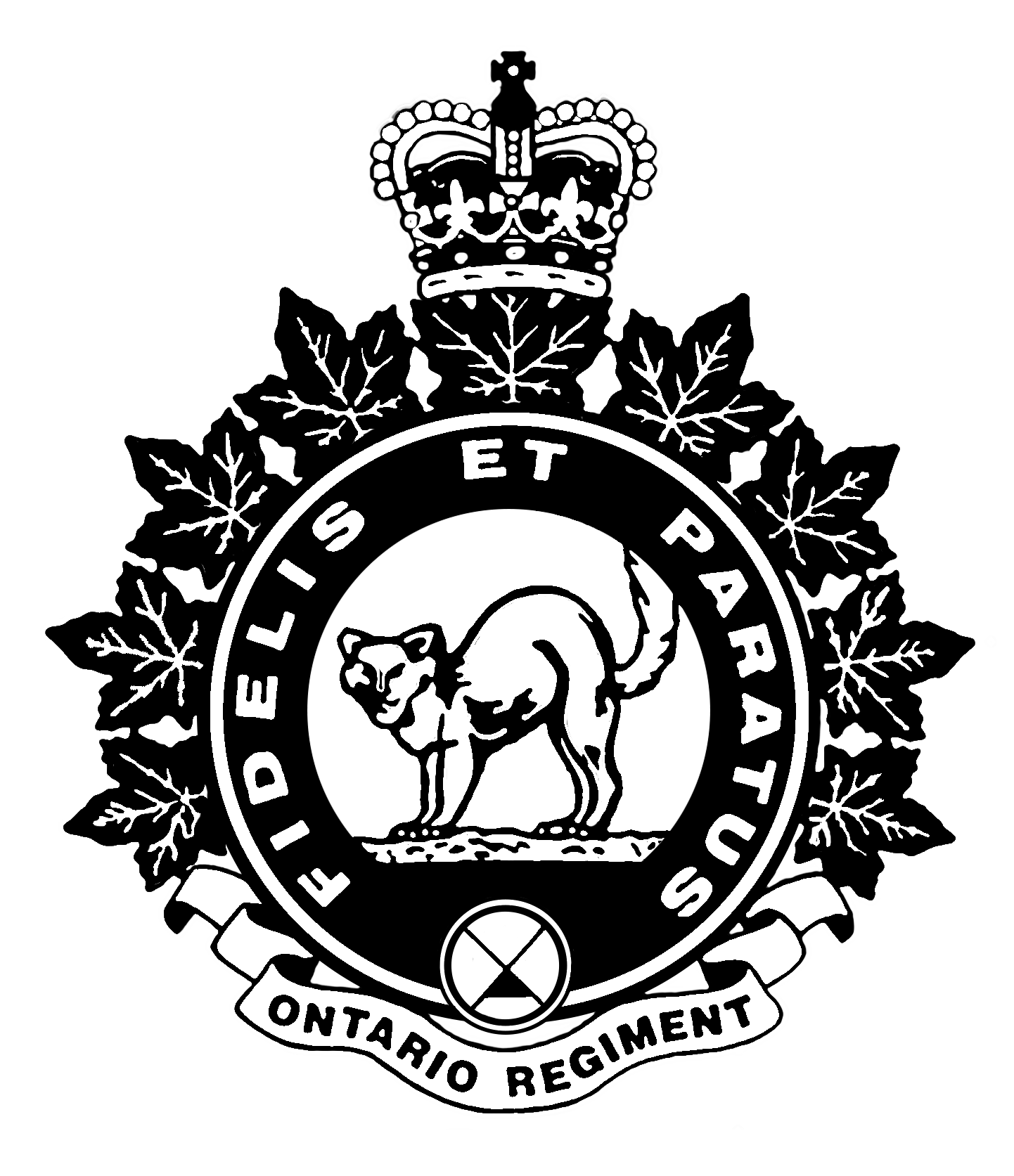A Short History of the Ferret Club
The roots of the Ontario Regiment Museum begin in 1976. That is when the Honorary Colonel of the Regiment, Norman Wilton funded the purchase of nine Ferret Scout Cars from the Canadian Armed forces for use as a ceremonial Troop.
Just over 4,400 Ferrets were produced by the United Kingdom from 1952 to 1971. The Ferret was used by 37 different counties. Canada purchased 124 Ferret Mark I cars in 1952 and used them until 1981.

It was in March of 1980 when nine Ferrets (CFR #’s 54-82504, 54-82506, 54-82513, 54-82519, 54-82535, 54-82563, 54-82564, 54-82582, and 54-82590) were transferred from the Crown to the Ontario Regiment and its Ferret Club. (It should be noted that of the 84 Ferrets that were sold (the others were donated to museums, became gate guardians, or became range targets); 71 were sold to an American company and nine went to the Ferret Club. Finding a Canadian Ferret is very rare.)

Former OntR Sargent David Mountenay was president of the Ferret Club for 25 years. He led a group of active and retired OntR members (and a few non-military) to strip, refurbish, and restore the Ferrets to running condition. The OntR Museum still to this day believes that the best exhibits are operational.
Over the next couple of decades, the scope and breadth of the Ferret club grew. The original use of the Ferret troop as a ceremonial adjunct to the Regiment remained, but both the club and the collection started to grow. Jeeps, Sherman Tanks, and Centurion Tanks were acquired and restored in a two car garage at Simcoe St. N and Glover Road. Within a few short years, the Club outgrew this space and they moved to a dairy farm at Ritson Road and 8th Concession.
Even after this move, the club continued to grow. GM Trucks built in Oshawa joined other armoured and soft skinned vehicles used by Canada and its allies. Space was needed for the two M60 tanks, the Staghound, the Lynx Recce Vehicles, an artillery pieces and wreckers.

Eventually, the club moved to the Ontario Municipal Airport. This was appropriate from a historical point of view because between June 1941 to December 1944, No.20 Elementary Flying School was based out of RCAF Station Oshawa. As part of the British Commonwealth Air Training Plan, potential pilots from all over the British Commonwealth learned to fly in Tiger Moths before moving on to more advanced aircraft in other flying stations. The RCAF Station was also tasked with supporting agent training at the nearby (and highly secret) “Camp X’. Oshawa Tiger Moths were often used to practice night insertions for the agents being trained.

When the Ferret Club moved to the Oshawa Airport, the Ontario Regiment Museum (now known as the Static Section) moved in along with them. Like most military units, the Ontario Regiment has a storied and honourable history, with the artifacts to match. There has always been an attempt to tell the story of the Regiment; first in the Armouries and then for many years in a room at Parkwood (the home of Hon. Col. R.S. (Sam) McLaughin).
With the space now available, the Static Section has the opportunity to tell the story of the Ontario Regiment in concert with the Vehicle Section (the new name of the Ferret Club) from the Fenian Raids, to World Wars 1 and 2, through the Cold War and into the Modern Era – in peace, war, and peacekeeiping. Sections are also dedicated to D.I.L. (Defense Industries Limited, at the time the largest munitions manufacturer in the Commonwealth) and Camp X.

The museum is an Accredited Canadian Armed Forces Museum. This means that it is not just a collection of vehicles and items on display. The collection is professionally curated. All of the museum functions of acquisition, preservation, documentation, and exhibition are followed in order to (with our brother and sister museums) help preserve and educate about the three hundred years of Canadian Military History.
In 2017, the Ferret Club was amalgamated with the Ontario Regiment RCAC Museum. In 2018, the new Military Vehicle Conservation Centre (MVCC) will come on line. This will substantially increase both the amount of display area and the amount of space for vehicle conservation and restoration.

Our volunteers are critical to the operations of the Museum. They undertake all vehicle restoration, maintain the museum, conduct tours, staff all of our events and, aided by serving members of the Regiment, crew and operate vehicles at nearly every Regimental function and commemorations throughout Ontario, the annual Coe Hill Labour Day parade, CNE Warriors’ Day parade, and Oshawa’s Fiesta and Remembrance Day parades. The Museum volunteers are as important to our celebration of Canadian Military history and remembrance of sacrifice as any of our vehicles or displays.
It is an exciting time for the Museum. This year sees the opening of the Military Vehicle Conservation Centre (MVCC). This new additionswill increase the number of vehicles being displayed and eventually provide more space for vehicle restoration. The Museum has significant plans for future growth.
The Ontario Regiment Museum is an accredited Canadian Forces Museum. We are grateful for the assistance provided by the Directorate of History and Heritage at the Department of National Defense. We also acknowledge the support of the City of Oshawa, Oshawa Executive Airport, and our friends at 420 Wing, Royal Canadian Air Force Association.

